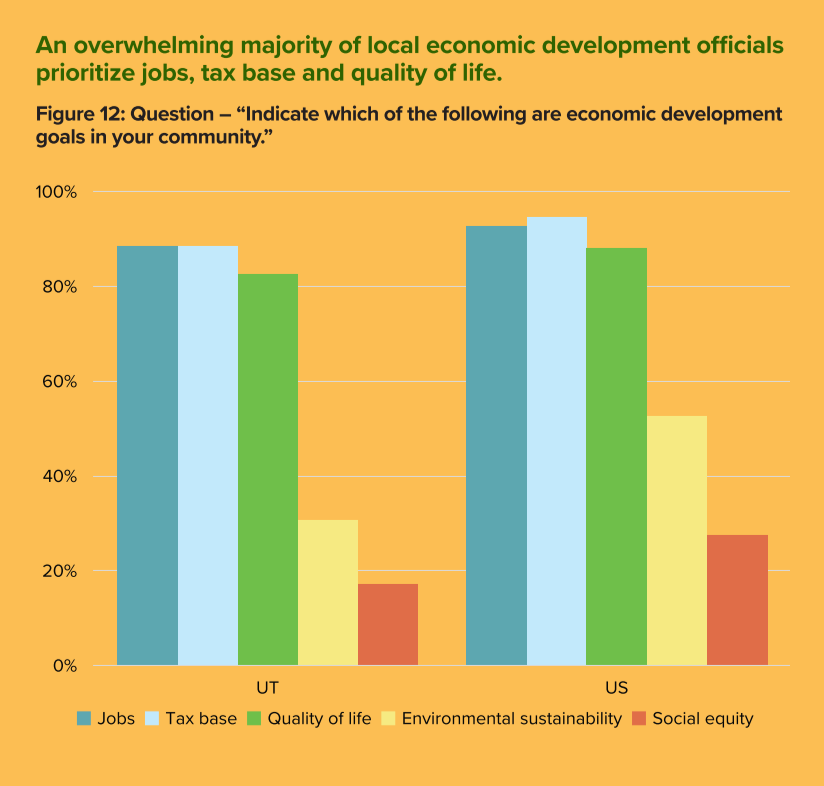Utah Foundation’s series on state and local incentives addresses the risks that can come with providing public financial benefits to select private parties. The series explores ways to minimize those risks. This third report of the series focuses on local incentives.
This report relies on a survey that compares Utah’s cities and counties with their national counterparts. Utah Foundation supplemented the survey results with dozens of interviews with local governments.
Cities and counties in Utah primarily rely upon general fund revenues and a mechanism known as tax increment financing (TIF) to pay for their economic development programs. Utah’s local economic development officials are nearly twice as likely as their peers nationally to use TIF. This is because TIF is the primary tool local governments have to fund incentives. TIF can be based on either property tax or sales tax revenues. However, using property tax revenues is much more common.
This report examines local incentives practices through an analytical framework that asks whether they are being used in a manner that is strategic, coordinated, effective, efficient and transparent. Finally, the report analyzes local interpretations of national accounting standards to determine whether those standards are being followed.


